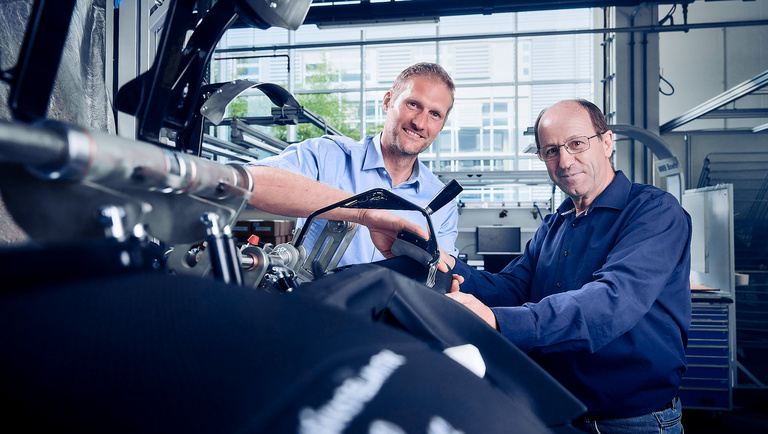
- Success Story
Excellent cooperation as the key
DRÄXLMAIER relies on strong partnerships for a successful digital strategy
PLM-Engineering-Platform
The PLM engineering platform has been extended to other areas of the company as part of its digitalization strategy. The aim was to achieve seamless integration of the upstream and downstream systems from acquisition to production. At the same time, process speed, transparency, and traceability have all been significantly improved as part of the change management process.
The integration covers the following systems: electrical (KBL, HED, acquisition BOM), materials management (supplier management, ERP, SAP), engineering BOM (Teamcenter), manufacturing BOM (SAP) and production BOP management (Teamcenter, SAP, MES) with end-to-end change management (ECM).
In the course of making the changes, the following challenges were successfully mastered, with further optimization potential identified.
Challenges relating to processes
The process landscape of established IT environments includes numerous special cases that are often not documented in process maps and are only identified during implementation. Identifying and assessing them at an early stage is just as critical as flexibly adapting to relevant special cases during implementation.
In the first step, it is essential to pragmatically determine the relevance of the special cases and analyze their background. They must then be addressed specifically where they are necessary for achieving the company’s goals so that sustainable and adaptable solutions can be developed. This creates space for innovative examples of best practice based on modern IT standards that are implemented through a targeted approach, rather than finding solutions to nonexistent problems. Processes that do not add value to the company were critically questioned and, wherever possible, optimized or replaced.
Cooperation success factors
Individuals possessing outstanding knowledge and expertise were identified across the various organizational units and encouraged to help actively shape this transformation. A key success factor involved enabling these experts to make the transition from silo-like structures to results-based, interdisciplinary forms of cooperation.
There was a need to overcome social, cultural, and geographical challenges and establish a consistent understanding of technical terms. To maintain close alignment, daily integration stand-up meetings were held over the course of several months. Hybrid on-site focus workshops were also organized over several core weeks with the specific aim of speeding up progress. This close collaboration proved indispensable, especially for swiftly resolving special cases in the end-to-end analysis.
Optimizing the data quality
The existing data quality was adapted to the previous systems and processes. In parallel to creating the system, however, a new, innovative process and system landscape requires an optimized data structure.
Representative product datasets were defined across all system areas for integration development purposes. This made it possible to perform fast, successive integration test runs and identify any necessary optimization measures at an early stage. Stress tests could be performed with more extensive product datasets to validate system robustness and runtime behavior.
Focused efforts to drive transformation forward
Having MHP as a partner facilitated a targeted approach to driving the digital transformation – through stronger cooperation, optimized processes, and sustainable system integration, which ensures the company remains competitive in the long term.
“Our success in achieving the transformation together with MHP is due to the combination of innovation and collaboration. By automating and integrating all relevant attributes in a future-proof system environment, we ease our teams’ workload while boosting the efficiency of our processes.”


